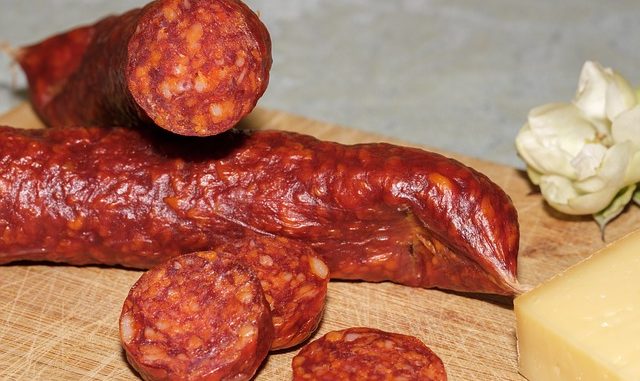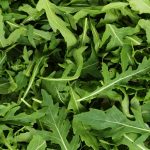
The Italians have been practicing the curing and preservation of pork products for over two millennia. Here we review the many products to come from this food-loving country. Their charcuterie is renowned the world over and there are many who are very keen to enjoy the unique flavours these cured meats offer. Curing meat is a sure way of obtaining improved shelf-life on products which rapidly spoil if not looked after properly.
History Of Italian Charcuterie
The practice, nee art has very old roots in Italy. The Neolithic age is where the story of charcuterie begins. Archaeological digs have revealed, certainly in Northern Italy that curing meat had developed. South of Mantua which is close to Virgil’s birthplace, there is an Etruscan site from the 5th century BCE which showed that there was a culture of breeding pigs for the pure purpose of curing their meat. This site showed that of 50,000 bones excavated, nearly two-thirds were those of pigs. The animals were missing their posterior bones which many experts believe that hams were prepared and salted with additional smoking to preserve the meat for consumption. The Ancient Greeks probably traded with these tribes as their was an export trade to Athens.
In Roman times, pork and ham were constituent part of the menu. Feasts and large gatherings were all celebrated with offerings of roasted and cured meats. Cato tells us in his book De Agricoltura of the 2nd Century BCE of a recipe with a process for curing and preserving raw ham or what is known as prosciutto crudo. Like salt, cured hams were also used as currency in some parts or as part of trade agreements.
Over the years, the development of curing techniques with the increasing consumption of cured pork has gathered momentum. In the Renaissance, cured meat was part of sumptuous banquets and played a leading part in developing Italy’s national identity. The Resorgimento of the mid-1800s saw curing houses and shops specifically selling cured meats on the open market. The world too opened its eyes to the charcuterie of Italy and it has never looked back.
Italy And Its Relationship To Traditional European Products
Of all the cured meats in the EU, Italy produces over 50% and offers a wide choice in terms of quality and quantity. The European Union recognises twenty-five of these with a DOP and IGP label. To achieve such a label means the products are recognised for their tradition and centuries of experience and cannot simply be copied
What does that mean ? They are protected according to their denomination of origin and can only be given their name if they produced in the time honoured fashion and produced in the stated area of origin.
Cured Ham:
Prosciutto di Parma (DOP)
Prosciutto di San Daniele (DOP)
Prosciutto di Modena (DOP)
Prosciutto di Veneto Berico Euganeo (DOP)
Valle D’Aosta Jambon de Bosses (DOP)
Prosciutto di Carpegna (DOP)
Prosciutto d Toscano (DOP)
Prosciutto di Norcia (IGP)
Salami:
Salame di Varzi (DOP)
Salame Brianza(DOP)
Salame Piacentino (DOP)
Salamini Italiani alla Cacciatora (DOP)
Soppressata di Calabria (DOP)
Miscellaneous Cured Meats:-
Capocollo di Calabria (DOP)
Coppa Piacentina (DOP)
Culatello di Zibello (DOP)
Pancetta di Calabria (DOP)
Pancetta Piacentina (DOP)
Salsiccia di Calabria (DOP)
Valle D’Aosta Lard d’Arnad (DOP)
Bresaola della Valtellina (IGP)
Cotecino Modena (IGP)
Mortadella Bologna (IGP)
Speck dell’Alto Adige (IGP)
Zampone Modena (IGP)
The Curing Of Meat
Artisans are those transform pork meat into precious cured meats. This is generally an inherited tradition which has been passed through the family and created the social structure known as Corporazione dei Salorli (the Corporation of Salters). It was originally formed in that food loving centre of Italy, Bologna which is a city with huge meat curing traditions. Even in the 20th century, these traditions are being taken out of the workshop and into industrial levels using technology which helps the producer meet the huge demand for these exceptionally products.
The production of a cured meat requires exacting standards to be adhered to throughout the whole process. It starts with the breeding and rearing of specific animals. Modern farming and rearing methods mean that all these animals must comply with husbandry standards and strict rules for hygiene. The process of curing is also long and must be performed in conditions allowing the highest possible standards of hygiene. Modern technology especially in processing has meant that it is easier to maintain quality without sacrificing flavour or high sanitisation. It also means those long-held traditions can be made without impinging on the quality of the product.
The Nutrition of Cured Meats
We don’t often associate good nutrition with the curing process. Given the success of Biltong from South Africa as a source of high level protein for sports people, it is not surprising that cured meat is also a provider of good quality protein. There is a downside in that salt which is a necessary presence in some meats has health connotations but these are offset by the presence of vitamins and minerals which are not readily obtained with other foods. Cured meats have as substantial a presence in nutritional terms as eggs, cooked meats and milk. Cured meat contains lots of iron, needed for haemoglobin production and this oxygen transports, zinc for good liver function and immunity and magnesium for general energy provision.
In terms of vitamins, all the B vitamins are well represented. Thiamine (B1) and riboflavin (B2 are in abundance. B1 is needed for essential functioning of the nervous system whilst B2 is involved in tissue regeneration. Finally, B12 or cobalamin is needed for the production of red blood cells and to assist in the proper functioning of the central nervous system.
Owing to improved processing methods, the cholesterol content of various cured meats is now reduced and the products have been brought more into line with current nutritional guidelines. The overall fat content of these meats has also reduced through better breeding and curing methods.
Prosciutto Crudo
The Ancient Romans enjoyed this meat which is a testament to its age and longevity. Only the select pieces of pork, the hindquarters are ever used.
Apart from the animal, the only other ingredient used is salt which is massaged into the meat to preserve it. After a period of rest, the meat is washed carefully in warm water, then allowed to dry and cure over a very long period of time. During this curing process which takes over 12 months, the meat takes on the characteristics of flavour and texture which has made it famous the world over.
Soppressata
The Italian dry salami of which there are a few variations. The two principal types are the cured dry sausages from Basilicata, Apulia and Calabria with another type, uncured salami from Tuscany and Liguria.
Soppressata belongs to the southern Italian traditions rather than in the north. In the south, local farmer still kill their own animals to make a their own unique soppressata alongside other cured meats. Occasionally, cured ham is used instead of just pork meat.
Lardo
Lardo is one of the more intriguing products to be obtained from the vast range of interesting products coming ourt of Italy. It is cured pork fat that is removed from underneath the skin layer. The techniques for curing vary from region to region.
Lardo Di Arnad (DOP)
This fat is only made in the tiny village of Arnad in Valle D’Aosta. The cut comes from the pork shoulder. It must be a pig weighing no less than 160kg and be over 9 months old. Once the fat is removed, it is placed in special containers and covered with salt, natural flavourings, spices and herbs. It is cured for about 3 months. It is pale pink in colour with a particular flavour which is contributed by the various spices and other ingredients added. Part of the flavour also comes from the food the pigs are given during their rearing process. This includes chestnuts, flour, vegetables and milk whey. the lardo is always thinly sliced, flavoured with black pepper at times, boiled chestnuts and served with toasted bread or polenta.
Culatello
Culatello is produced from the upper posterior section of the pork haunch. The skin and bone is carefully removed as part of the preparation. The boned and skinned haunches are inspected for quality purposes and then trimmed before being salted and tied into their traditional pear shape. these haunches are cured for a period that varies from 6 to 12 months.
Culatello Di Zibello (DOP)
Culatello di Zibello is a specific type of cured meat produced in the municipalities in the province of Parma. It is characterised by a uniform red colour when sliced with a pure white fat, and a soft texture. The flavour is highly distinctive, sweet and delicate with a pungent aftertaste. It is often macerated in white wine before serving, which makes it even softer and more pungent. It is usually served in a simple manner: thinly sliced with a high quality bread.


I absolutely adore the different types of salami. It’s one of the only foods that stops being a vegetarian in all honesty. Quite like your style but I saw a really nice article about these products the other day which was a bit more homely. I think you write in a bit of a scientific research way which is OK but not to everyone’s tastes. Still, like some of the work. Please write a bit more about Italian cooking – it’s so much better than other in other countries.